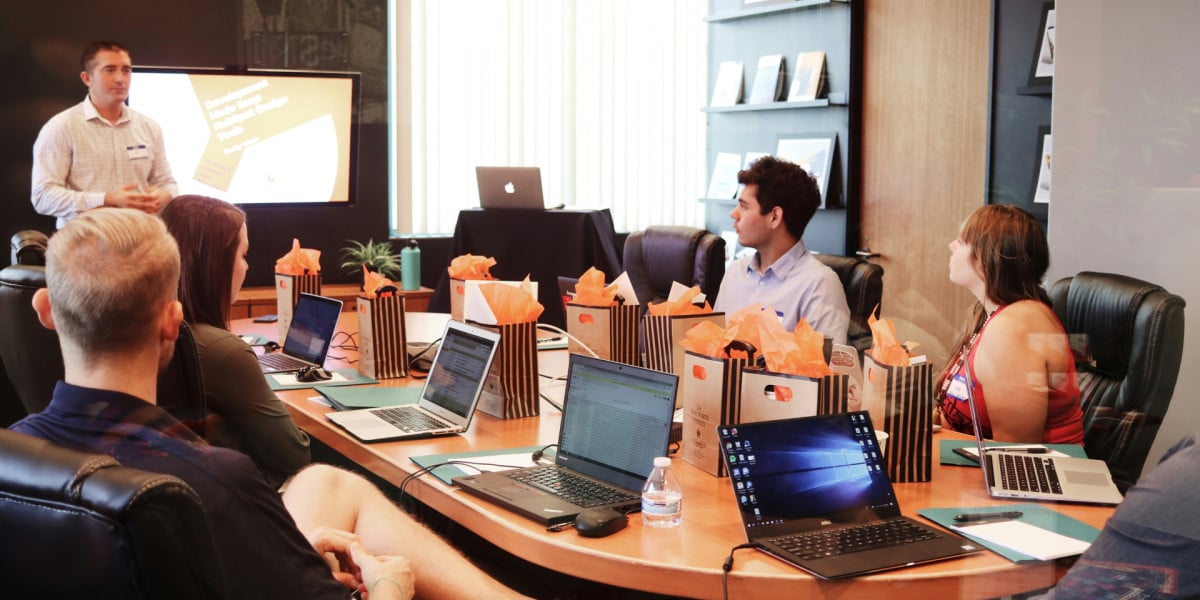
Why student jobs matter for business schools
The Student Working Lives report provides a strong call to action for HE leaders to act to support students in balancing successful study outcomes alongside work.
- Home
- / Insights
- / Knowledge sharing
- / Skills in the curriculum. What exactly are we trying to solve?
Skills in the curriculum. What exactly are we trying to solve?

Authors

Iria lopez
Human Centred Design Consultant

Marianne Savory CMBE
Lecturer and Director of Student Experience and Opportunities, Leeds University Business School
Leeds University Business School reflect on their design sprint that started with the question: “How can we better support postgraduate students to develop and articulate their professional skills?”
Lack of reflective time can lead us to jump into solutions without yet having clarity on why a problem is happening. We rush to assumptions because we don’t have the time to reflect as a group, but also because we think we already know what the problem is. Each programme or module has so many challenges to address and so many people have their own priorities, aligning everyone can seem an impossible task.
When we invite people to a design sprint, everyone needs to understand that the priority is to serve students. By developing empathy with the student’s reality, we can start to see what our priorities might be.
The student experience is our guiding principle to align everyone together. However, we do need to go beyond student-centricity. We need to understand the experience of everyone in the system, because improving the experience of the student will first require us to improve our own internal relationships and processes. We are a system, and effective design requires systems thinking - everything is interconnected.
How understanding the student experience can help align priorities
When multiple priorities are in place, listening to the student experience will help you identify where to start. This doesn’t mean the rest of your priorities are not important, all of them are, but we need to start somewhere.
Leeds University Business School (LUBS) undertook a design sprint starting with the question: “How can we better support postgraduate students to develop and articulate their professional skills?”
We talked to students during the discovery phase (most of whom were international), alongside alumni, employers and colleagues. This informed a central narrative and helped colleagues to challenge their own assumptions, and most importantly learn what was important to the students. One of the key insights we focused on was that students were not fully aware of the professional skills they were developing in their programme.
This doesn’t mean that we dismissed the other insights, but when energies and time are limited, prioritising this as a starting point gave direction to deliver a tangible outcome. This has taken the form of a programme specific skills map that will explicitly showcase the skills a student is developing through their programme (designed in collaboration with students).
Why student-centricity is not enough to solve the problem – what is the root of the problem?
Having said all of the above, we also want to highlight how our complex environment has an impact here. If we only understand the experience of the student, (without understanding the experience of academics, professional staff and other stakeholders) we might end up only addressing the symptom of the problem, and not the root cause.
Why is it that students are not aware of the skills they are developing?
In some cases, it may not be communicated explicitly enough, in other cases it will be communicated at a time when students are overwhelmed with information and emails, so it is lost.
Why were those skills not sufficiently communicated?
Why were they communicated at the wrong time?
Why – why – why... ?
Only those multiple why’s would help us get to a larger, clearer picture.
We are met with multiple responses to these questions, with ‘lack of time’ a common response, but if we scratch further, we might see deeper root causes. It is not easy to get to those underlying causes, because it requires very honest (and vulnerable) conversations with colleagues and here we might hypothesise on how academic identity may be a motivating factor for engaging (or not) with the skills agenda, over others. That motivation is, in itself, an insight and informs the evidence-based approach we move forward with. Perhaps academic colleagues won’t engage if they are simply told they need to modify their modules to integrate skills, but far more likely to be motivated if presented with evidence supporting its necessity.
Reflection and conclusions
Understanding the challenge and ensuring outcomes are evidence-based are words that resonate in academia. In a design process, those insights (the evidence) are the outcome of developing “empathy”. Empathy for students, for academics, for professional staff, for employers - in all directions. Academics developing empathy for the experience students have, students developing empathy for the constraints academics live within - without that empathy in all directions, we can’t understand the problem fully.
However, the word empathy does not appear to have the same connotations of importance and relevance as the word ‘evidence’, and that is why this article doesn’t mention it to explain the design process, even when “empathy” is at the core. Developing empathy requires touching onto something very difficult to address in academia: the academic identity and vulnerability. Yet, without touching the emotional side, higher education won’t be transformed in the way we recognise it needs to.
